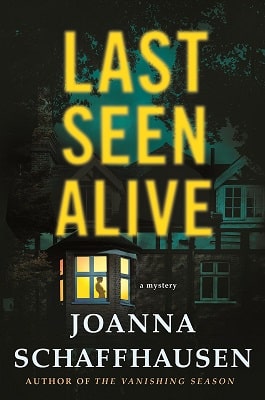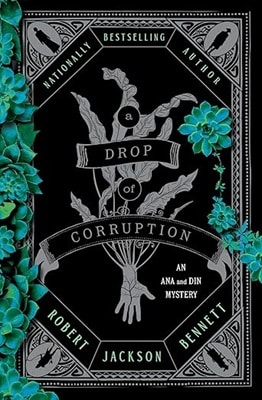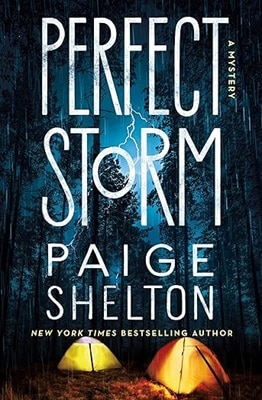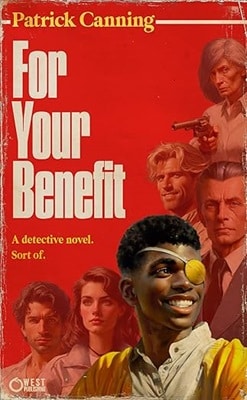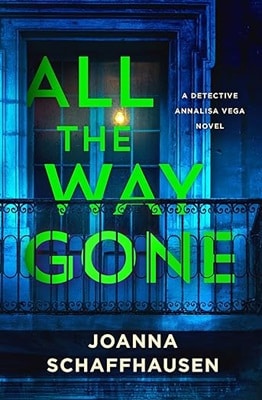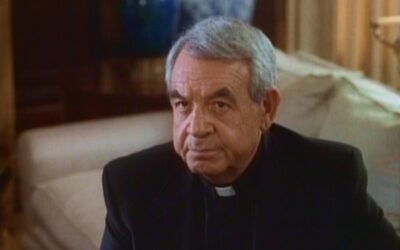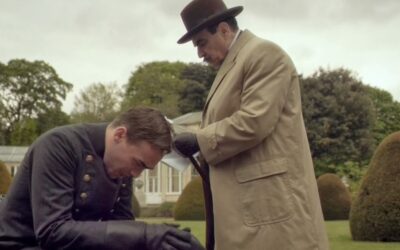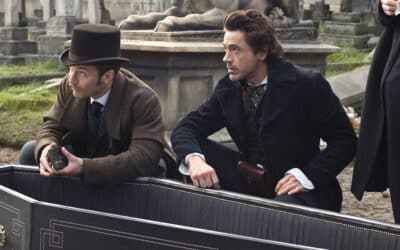
Q&A
Joanna Schaffhausen wields a mean scalpel, skills she developed in her years studying neuroscience. She has a doctorate in psychology, which reflects her long-standing interest in the brain―how it develops and the many ways it can go wrong. Previously, she worked as a scientific editor in the field of drug development. Prior to that, she was an editorial producer for ABC News, writing for programs such as World News Tonight, Good Morning America, and 20/20. She lives in the Boston area with her husband, daughter, and an obstreperous basset hound.
Interview by Elise Cooper
Q. Were any of these characters based on real people?
Joanna: Ellery, the victim, and Reed, the FBI agent are loosely inspired by two real people. Reed was based on Bob Keppel, the Seattle homicide detective who was on the job for one week when given the Ted Bundy case. At that time, they only knew there were missing women. The Ted Bundy case changed the trajectory of Keppel’s career. He ended up specializing in serial killers. He was one of a few law enforcement people who tried to get Bundy to confess to other crimes that they suspected, to give up the other bodies. Reed, as with Keppel, was a green law enforcement officer attached to one of the cases of the century.
Q. What about Ellery?
Joanna: She was loosely inspired by a woman named Carol DeRonch. Bundy, pretending to be a policeman in Montana, abducted her at the age of eighteen. She was suspicious after he drove away from the police station. They struggled in the car, and she was able to escape. The day she escaped; Bundy found another woman who he killed. But being his first known living victim, Carol, was able to describe what he looked like and the car. Her survival allowed all the law enforcement officers in different states to put the clues together. Even though this is now more than forty years ago, she is still hounded by Ted Bundy enthusiasts. Although he is dead, he follows her around like a ghost. At this point she prefers to be left alone. People wanted to know more about her, to know more about what it was like, and even pretended to be fellow victims. The idea behind Ellery is that as a young person she was attacked and survived. But somehow her life is still about this horrible man. How do they find an identity for themselves when the worst thing that happened is perceived as the most interesting about them?
Q. How would you describe Ellery?
Joanna: As with Carol, they both had survivor’s guilt. But there is a lot of differences between Carol and Ellery. Abby was Ellery’s name when she was young, living in Chicago, deserted by her father, with a brother dying of cancer and a mother consumed by it. Abby had to fend for herself. After Coben got her, she grew up quick. She went with her middle name, Ellery, who sees herself as a separate person from Abby. She had dreams that were derailed. Ellery has a sense of loss. Even though Ellery survived, Abby died. They both end up with scars and recover from PTSD as she makes peace with what happened to her. Now for the first time she has healthy relationships. Ellery completes the healing journey for Abby.
Q. How would you describe Francis Coben, the serial killer?
Joanna: He has some elements that are Bundyesque. The infamy, the hunger for more, abducting young women with a lot of promise in their life. One of the reasons I write my books is that the public wants to make more of these awful men than is there to be found. This desire to imagine they are brilliant and charming when they have done horrific acts and should not be admired. I wanted to show like the others, Coben, is just this killing machine. The normal person and the monster live inside this one person. He compartmentalizes, is a habitual liar, narcissist, egomaniac, and sociopath. Coben is obsessed with Ellery, the one outstanding victim, the one who got away at the age of fourteen.
Q. How would you describe Reed?
Joanna: A people pleaser who wants to fix everything. Brilliant, charming, wants to be the hero. He grew up as the baby of all sisters. Being adopted, her was raised in a white family but he himself is white Hispanic. He feels the need to prove himself. He is also honest, caring, protective, has a stubborn streak, is a good cook, and enjoys playing the piano.
Q. What’s the relationship between Reed and Ellery?
Joanna: I wanted to explore how the kidnapping and rescue was the worst thing that ever happened to her and the best thing that ever happened to him. The premise of the first book, The Vanishing Season, has them reunite after a decade and a half. Reed feels he is the hero of the story, catching Coben, and rescuing her. But after they reunite, he gets to see all the ways he did not save her. He participated in perpetuating Coben’s legacy by writing a book off her story. They are the only ones who know the truth about her story. They are a mirror of each other. She never has to explain anything to him. Both she and Reed can be themselves with each other that gives them a unique bond even with a 13 year age difference. Eventually they form a romantic attachment as adults.
Q. Tell us more about the journalistic quote by Ellery?
Joanna: You are referring to this one, “For years, people like you have sold my story and packaged my pain as entertainment. You set it to scary music and surround it with ads… You justify it by saying there’s a lesson here. We can learn about him. We can protect ourselves better in the future. Well, the fact that we’re here now, that you’re talking about giving him the stage and making him a big, big TV star… that proves you haven’t learned a thing at all.” People should be able to walk away and live their life in peace.
Q. Some people view journalists as uncaring and self-centered. What is your view on the profession?
Joanna: I think some can be described that way, but not all. I worked for seven years for ABC national news as an editorial producer. In general, I think they want to get it correct, especially the True Crime people. I have mixed feelings where True Crime runs the gamut from being offensive to being more thoughtful. Kate Hunter, the on-air journalist in the book, wants to milk the story between Ellery and Coben. She is looking for the big ratings grab. But does want to give the families justice for the victims that have never been identified. Readers will get the feeling that this is a secondary want for her.
Q. What’s your next book about?
Joanna: For now, this is the last book in the series, because Ellery has completed the journey I intended her to complete. I originally conceived the idea for five books so there is no new book on the horizon. But I would like to hear from the readers if they would like more books. Please contact me at https://www.joannaschaffhausen.com/contact/
The new book in my other series, the sequel, is called Long Gone. It comes out in August 2022. Detective Vega blew up her life, both personally and professionally, at the end of the first book. Now she is called to the scene of a weird crime where a fellow police officer is shot dead. Present is his young wife who is unharmed. Vega comes up with a suspect who is dated by her best friend.
Review by Elise Cooper
Last Seen Alive by Joanna Schaffhausen shows why she is the master storyteller of serial killers. There is not a book she has written that is not terrifying, intense, and complex. She not only gets into the heads of the murderers, but also the victims. Readers will gain insight into what it is like to become a public figure because of circumstances beyond someone’s control, trying to find normalcy and privacy.
The prologue shows how FBI Agent Reed Markham and Boston Detective Ellery Hathaway have a long relationship. Seventeen years ago, he rescued fourteen-year-old Ellery, then known as Abby, from serial killer Francis Coben. This monster had kidnapped, tortured, and held her hostage in a closet for days. There were seventeen other victims that he tortured, mutilated, and killed.
Fast forward to current day when television celebrity and journalist Kate Hunter wants to interview Coben to supposedly get justice for the victims never found. But his one condition for the interview and to give up the location of the bodies is a face-to-face meeting with Ellery.
Coben is pure evil that lurks behind a normal face. He is one of the most terrifying psychopaths to ever appear in a thriller. Although the violence is not graphic, readers are able to understand his horrific crimes. He loves to get into Ellery’s head and knows that he will always be a part of her soul.
Ellery and Reed had a rocky relationship, first rescuer/rescuee, then friends to lovers, but never able to get out from what brought them together when they first met. Unfortunately, Ellery walked away from Reed to try to free herself from Coben’s legacy. Now they are back working together to find the other victims. The question for readers, will Reed and Ellery have their happy ending?
Although the crimes are dark, the author sets such a great pace that the book becomes a page turner that cannot be put down. There is something about serial killers that draws people to their stories. As with her other series and previous stories, Last Seen Alive, is part mystery, part character study. The conflicting emotions, the pain both physical and emotional, and the reality all play a part in the telling of this captivating thriller.
Joanna Schaffhausen's Latest
Last Seen Alive
Boston detective Ellery Hathaway met FBI agent Reed Markham when he pried open a serial killer’s closet to rescue her. Years on, their relationship remains defined by that moment and by Francis Coben’s horrific crimes. To free herself from Coben’s legacy, Ellery had to walk away from Reed, too. But Coben is not letting go so easily. He has an impossible proposition: Coben will finally give up the location of the remaining bodies, on one condition—Reed must bring him Ellery.
Now the families of the missing victims are crying out for justice that only Ellery can deliver. The media hungers for a sequel and Coben is their camera-ready star. He claims he is sorry and wants to make amends. But Ellery is the one living person who has seen the monster behind the mask and she doesn’t believe he can be redeemed. Not after everything he’s done. Not after what she’s been through. And certainly not after a fresh body turns up with Coben’s signature all over it.
More Detective Fiction
Advertisement
Detective Features
Priest Detectives
These holy detectives are not content with the mysteries of faith
The Characteristics of Hercule Poirot
Peculiar habits and unmatched deductive abilities
Detective Novels
The pinnacle of sleuthing

